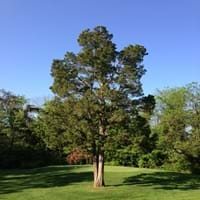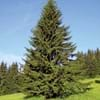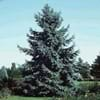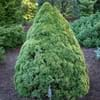Life Span
Perennial
Perennial
Type
Needled or Scaled Evergreen
Flowering Plants, Fruits, Trees
Origin
Northeastern United States, Mid-Atlantic United States, Southeastern United States, North-Central United States, Central United States, South-Central United States, Canada
Central Asia
Types
Eastern juniper, Souther juniper
Aceymac apple, Bailey Sweet apple, Dabinett apple, Nehou apple
Habitat
Lower slopes, Open Plains, Prairies, Woodlands, Woods
Hillside
USDA Hardiness Zone
3-7
5-8
Sunset Zone
A3, 1a, 1b, 2a, 2b, 3a, 3b, 4, 5, 6, 7, 8, 9, 10, 11, 12, 13, 14, 15, 16, 17, 18, 19, 20, 21, 22, 24
A1, A2, A3, 8, 9, 10, 11, 12, 13, 14, 15, 16, 17, 18, 19, 20, 21, 22, 23, 24
Habit
Pyramidal
Oval or Rounded
Flower Color
Light Red, Sky Blue, Yellow Brown
White
Flower Color Modifier
Bicolor
Not Available
Fruit Color
Light Blue
Green, Red
Leaf Color in Spring
Dark Green
Dark Green
Leaf Color in Summer
Dark Green
Green
Leaf Color in Fall
Dark Green
Brown, Green, Light Yellow
Leaf Color in Winter
Dark Green, Bronze
Not Available
Leaf Shape
Irregular
Oblong
Plant Season
Spring, Summer, Fall, Winter
Spring
Sunlight
Full Sun, Partial Sun
Full Sun, Partial shade
Growth Rate
Medium
Medium
Type of Soil
Clay, Loam, Sand
Loamy
The pH of Soil
Acidic, Neutral, Alkaline
Neutral
Soil Drainage
Well drained
Well drained
Bloom Time
Late Spring
Fall, Summer
Tolerances
Drought, Dry soil, Heat Tolerance
Drought
Where to Plant?
Ground
Ground
How to Plant?
Seedlings, Stem Planting
Grafting, Seedlings, Transplanting
Plant Maintenance
Low
Medium
Watering Requirements
Average Water Needs, Do Not over Water, Never Over-water, Requires regular watering, Requires watering in the growing season, Water daily during growing season
Medium
In Summer
Lots of watering
Lots of watering
In Spring
Average Water
Moderate
In Winter
Average Water
Average Water
Soil pH
Acidic, Neutral, Alkaline
Neutral
Soil Type
Clay, Loam, Sand
Loamy
Soil Drainage Capacity
Well drained
Well drained
Sun Exposure
Full Sun, Partial Sun
Full Sun, Partial shade
Pruning
Remove damaged leaves, Remove dead branches, Remove dead leaves
Prune when plant is dormant, Remove dead or diseased plant parts
Fertilizers
Compost
All-Purpose Liquid Fertilizer
Pests and Diseases
Gall Insects, Red blotch, Rust, Sooty Mold
Aphids, Canker, Caterpillars, Powdery mildew, Root rot
Plant Tolerance
Drought, Dry soil, Heat Tolerance
Drought
Flower Petal Number
Single
Single
Fragrant Bark/Stem
Yes
No
Foliage Texture
Medium
Medium
Foliage Sheen
Glossy
Matte
Allergy
Asthma, breathing problems
Mouth itching, Throat itching
Aesthetic Uses
Beautification, Bonsai, Landscape Designing, Showy Purposes
Not Used For Aesthetic Purpose
Beauty Benefits
Good for skin and hair
Not Available
Environmental Uses
Air purification, Food for insects, Indoor Air Purification, Prevent Soil Erosion, Shadow Tree, Shelter for wildlife, Versatility, Very little waste, Wildlife
Air purification
Medicinal Uses
Cold, Cough
Cancer, constipation, Diabetes, Diarrhea, Dysentry, Fever, Heart problems, Tooth ache
Part of Plant Used
Leaves
Fruits
Other Uses
Decoration Purposes, Showy Purposes, Used as Ornamental plant, Used for its medicinal properties
Used As Food, Wood is used for making furniture
Used As Indoor Plant
Yes
No
Used As Outdoor Plant
Yes
Yes
Garden Design
Feature Plant, Foundation, Mixed Border, Screening, Wind Break, Shade Trees, Street Trees
Fruit / Fruit Tree, Shade Trees, Showy Tree
Botanical Name
JUNIPERUS virginiana
Malus domestica
Common Name
Pencil cedar, Red Juniper
Apple Tree
In Hindi
पूर्वी लाल देवदार
सेब का वृक्ष
In German
Eastern Red Cedar
Apfelbaum
In French
Red Cedar Orient
Pommier
In Spanish
Cedro Rojo del Este
Manzano
In Greek
Ανατολική Red Cedar
μηλιά
In Portuguese
Eastern Red Cedar
Macieira
In Polish
Eastern Red Cedar
jabłoń
In Latin
Eastern Red Cedar
Arbore
Phylum
Tracheophyta
Magnoliophyta
Class
Pinopsida
Magnoliopsida
Family
Cupressaceae
Rosaceae
Clade
Not Available
Angiosperms, Eudicots, Rosids
Tribe
Mirini
Not Available
Subfamily
Cupressoideae
Not Available
Number of Species
Not Available
Not Available
Season and Care of Eastern Red Cedar and Apple Tree
Season and care of Eastern Red Cedar and Apple Tree is important to know. While considering everything about Eastern Red Cedar and Apple Tree Care, growing season is an essential factor. Eastern Red Cedar season is Spring, Summer, Fall and Winter and Apple Tree season is Spring, Summer, Fall and Winter. The type of soil for Eastern Red Cedar is Clay, Loam, Sand and for Apple Tree is Loamy while the PH of soil for Eastern Red Cedar is Acidic, Neutral, Alkaline and for Apple Tree is Neutral.
Eastern Red Cedar and Apple Tree Physical Information
Eastern Red Cedar and Apple Tree physical information is very important for comparison. Eastern Red Cedar height is 1,520.00 cm and width 460.00 cm whereas Apple Tree height is 25.00 cm and width 20.00 cm. The color specification of Eastern Red Cedar and Apple Tree are as follows:
Eastern Red Cedar flower color: Light Red, Sky Blue and Yellow Brown
Eastern Red Cedar leaf color: Dark Green
Apple Tree flower color: White
- Apple Tree leaf color: Dark Green
Care of Eastern Red Cedar and Apple Tree
Care of Eastern Red Cedar and Apple Tree include pruning, fertilizers, watering etc. Eastern Red Cedar pruning is done Remove damaged leaves, Remove dead branches and Remove dead leaves and Apple Tree pruning is done Prune when plant is dormant and Remove dead or diseased plant parts. In summer Eastern Red Cedar needs Lots of watering and in winter, it needs Average Water. Whereas, in summer Apple Tree needs Lots of watering and in winter, it needs Average Water.





